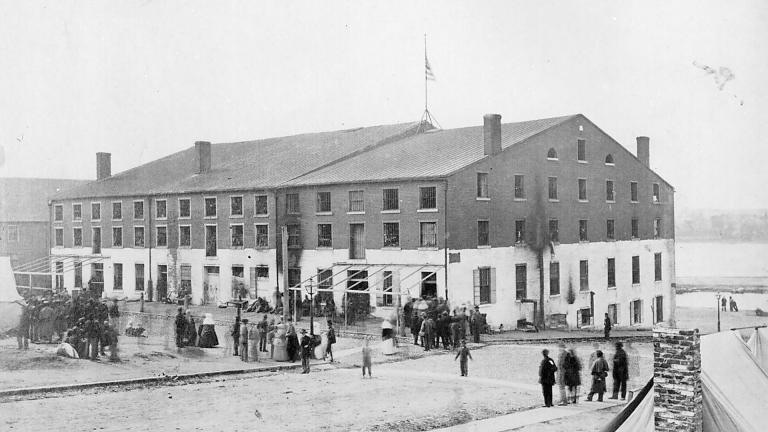The Remarkable Story of the Libby Prison Escape
On the night of February 9, 1864, more than 100 Union soldiers executed one of history’s most daring prison breaks. Led by the determined Colonel Thomas E. Rose, the men escaped through a tunnel and into the frigid winter air. While many were later recaptured, over half succeeded in reaching safety. This audacious breakout tarnished Libby Prison’s notorious reputation, ultimately leading to its closure and the transfer of inmates to more secure facilities further south.
Deplorable Conditions
Libby Prison, housed in a converted warehouse, was infamous for its overcrowded quarters, deplorable conditions, and meager food rations. Hundreds of men were crammed into makeshift cells without beds or bedding, forced to sleep on cold, hard concrete floors in spoon formation to maximize both space and body heat. At the command of their captors, they would turn over in unison to ease their aching bones and muscles.
Waking hours offered little respite. Food was scarce and unappetizing, and the open barred windows left the prison freezing in winter and sweltering in summer. Prisoners dared not approach the windows, fearing they would be shot on sight.
Rose Rises to the Occasion
Colonel Thomas E. Rose arrived at Libby after suffering defeat at the Battle of Chickamauga, the first major Civil War battle in Georgia. Stinging from the loss of his regimental colors and appalled by the prison’s conditions, Rose resolved to escape at the earliest opportunity.
After attempting to organize a prisoner revolt and two failed attempts to slip past the guards, Rose devised a plan to tunnel his way out. Partnering with like-minded Major Andrew G. Hamilton, he created an opening behind the kitchen stove that led to the basement below. This area, known as “Rat Hell,” was covered in straw and infested with vermin but provided the perfect cover for their escape, as even the guards avoided it.
Rose’s determination and encouragement kept the project alive. Despite numerous close calls and setbacks—causing many conspirators to lose hope—he managed to persuade them to keep digging, one spittoon of soil at a time.
An Illustrious Escape
After 17 grueling days of digging, primarily at night, Rose and Hamilton directed their tunnel to the surface. They emerged in the tobacco shed of a warehouse across the street from the prison, simply walked out the door, and melted into the city before heading north to join Union forces.
As news of the escape spread, a rush of prisoners attempted to access the tunnel. Despite the commotion, the guards were so confident in the prison’s security that they failed to investigate. Just as the Titanic became one of the deadliest shipwrecks despite being deemed unsinkable, Libby became the site of one of the most significant prison breaks despite being considered inescapable. In total, 109 inmates fled that night.
Libby’s Legacy
Of the 109 escapees, 59 made it to Union lines. Two perished while attempting to swim across the James River, while the other 48—including Colonel Rose—were recaptured and returned to Libby Prison. However, Rose’s presence alone raised concerns among the guards due to his crucial role in the escape. Less than two months later, he was exchanged for a captured Confederate colonel.
After the war, Libby Prison became a detention center for many who had once ruled over it, including its notorious warden, Major Thomas P. Turner. Years later, the prison was dismantled and rebuilt, brick by brick, in Chicago, Illinois, as a tourist attraction. Despite initial success, it lasted less than a decade, and today only a plaque remains to commemorate one of the greatest and most daring escapes in history.
